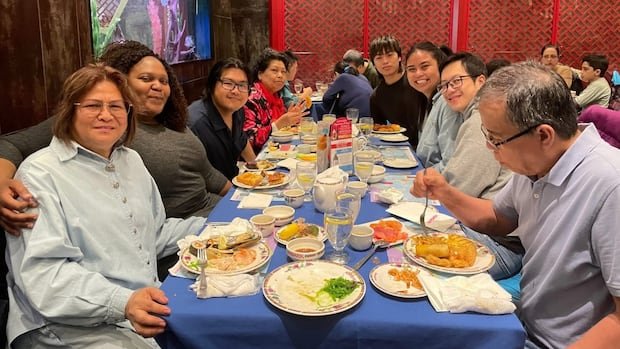– Advertisement –
MAHJONG has a special place in our family as we grew up with weekend gatherings of aunts and uncles for mahjong sessions while we (cousins) play traditional games.
Mahjong is a Chinese tile-based game of skill, strategy, and luck, which can be fun but can also be deadly.
Mahjong is commonly played by four players with a set of 144 tiles based on Chinese characters and symbols wherein the aim is similar to poker in making matching sets and pairs.
The goal of the mahjong game is to complete a winning hand, which consists of five sets and a pair. Sets are combinations of tiles as Pongs (three-of-a-kind), Kongs (four-of-a-kind) and Chows (sequences, or straights).
Mahjong was also shown in several scenes of Oro Plata Mata, a 1982 film directed by Peque Gallaga, which traces the changing fortunes of two affluent families in Negros during World War II.
The title roughly translates to “Gold, Silver, Death,” which depicts the travails of the families as they struggle and learn to survive during the Japanese occupation in the Philippines.
Mahjong had an important part in the lives of the characters as they try to deny the realities of war. By preserving their pre-war lifestyle, mahjong kept the women connected to their upper-class identity despite the hardship of the ongoing war.
Still surrounded by luxury and servants, the wealthy characters were privileged and spoiled, and reliant on their workers to survive the practicalities of daily life.
Playing mahjong at the balcony as they exchange sarcastic and juicy gossip was their coping mechanism while the maids would peel butong pakwan.
Mahjong is part of Chinese influence in the Philippines as cards and tile games are played when Filipinos attend wake or to have fun with friends.
It is an interesting side of Filipino culture that is taken from the Chinese.
Considered the world’s first and oldest Chinatown, Binondo was established in 1594 as a permanent settlement for Chinese immigrants, particularly those who had converted to Catholicism and intermarried with indigenous Filipinos.
It was positioned near Intramuros, but across the Pasig River, so that colonial rulers could keep a close eye on their migrant subjects amid fears of an imminent invasion from China.
In the years that followed, Binondo became the first stop for Chinese immigrants who arrived in Manila in search of a new life. It is the foundation of the Filipino-Chinese community amidst multiple occupations by our colonizers.
At present, the number of Filipino citizens who happen to be ethnic Chinese is not more than 1.2 million, or 1.2 percent of the total population of the Philippines.
Teresita Ang See of the Chinese-Filipino NGO Kaisa Para Sa Kaunlaran (KAISA) said in a paper that historically, there have been Chinese immigrants to the Philippines since the era of Spanish colonial rule.
However, the contemporary influx of Chinese immigrants into the Philippines started in the 1970s, especially after the establishment of diplomatic relations with China in 1975. It escalated in the 1980s with the market reforms instituted by Deng Xiaoping and the opening up of China to foreign markets.
The term “Tsinoy” was created by KAISA in 1992 as an alternative to “intsik,” which is quite harsh to the Tsinoy ear. Tsinoy is Tsinong Pinoy or Chinese Filipino, not Filipino Chinese (Filipino is the noun, Chinese is the adjective).
Ang See stressed that while the Tsinoys may recognize and take pride in their ethnic cultural heritage, they are simultaneously assimilated into all aspects of Philippine socio-economic and political life.
For the Tsinoys, Ang See added, their loyalty is first and foremost to the Philippines.
This sentiment is best encapsulated in the KAISA credo, which states that “Our blood may be Chinese, but our roots are deep in Philippine soil and our bonds are with the Filipino people.”
In the case of Negros Navigation Co., Inc. vs. Miranda and De la Victoria (GR. No. 110398, November 7, 1997), the Supreme Court found Negros Navigation negligent for tolerating the M/V Don Juan ship’s captain and crew to play mahjong while on board. They failed to take steps to prevent the collision or at least delay the ship’s sinking and supervise the ship’s abandoning.
Around 10:30 p.m of April 22, 1980., the M/V Don Juan collided with the oil tanker M/T Vector off the coast of Tablas Strait in Mindoro. The collision brought forth an inferno at sea with an estimate of about 4,386 casualties and was described as “Asia’s Titanic” and “world’s worst peace time maritime disaster”. Only 26 people survived.
the ship was overloaded. It was allowed to carry 864 people, including 810 passengers. However, when it sank, there were actually 1,004 people on board—140 more than the maximum safe capacity.
(Peyups is the moniker of University of the Philippines Atty. Dennis R. Gorecho heads the seafarers’ division of the Sapalo Velez Bundang Bulilan law offices. For comments, e-mail info@sapalovelez.com, or call 0917-5025808)
Disclaimer
Mindanao Gold Star Daily holds the copyrights of all articles and photos in perpetuity. Any unauthorized reproduction in any platform, electronic and hardcopy, shall be liable for copyright infringement under the Intellectual Property Rights Law of the Philippines.












